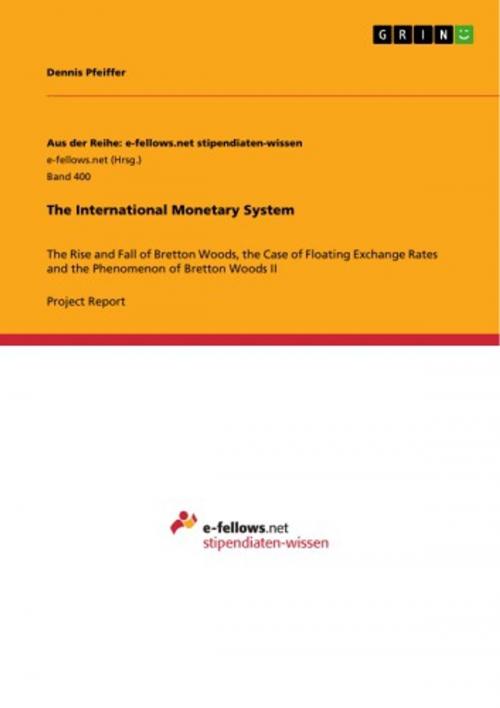The International Monetary System
The Rise and Fall of Bretton Woods, the Case of Floating Exchange Rates and the Phenomenon of Bretton Woods II
Business & Finance, Economics, Money & Monetary Policy| Author: | Dennis Pfeiffer | ISBN: | 9783656165330 |
| Publisher: | GRIN Publishing | Publication: | April 4, 2012 |
| Imprint: | GRIN Publishing | Language: | English |
| Author: | Dennis Pfeiffer |
| ISBN: | 9783656165330 |
| Publisher: | GRIN Publishing |
| Publication: | April 4, 2012 |
| Imprint: | GRIN Publishing |
| Language: | English |
Project Report from the year 2011 in the subject Economics - Monetary theory and policy, grade: 1,0, Heilbronn University, language: English, abstract: The international monetary system is the framework that unifies individual economies in the modern world. Its function is to guarantee regulation and stability, to settle financial embarrassment and to provide international monetary resources in case of economic disruptions within the system. (Eichengreen, 2000) Without understanding how the international monetary order works it is impossible to comprehend the mechanisms of the world economic system. This term paper therefore describes the history of the international monetary system from 1870 up to 1973. Additionally it examines the advantages and disadvantages of an alternative floating exchange rate system, as well as the phenomenon of the so called Bretton Woods II between China and the USA.
Project Report from the year 2011 in the subject Economics - Monetary theory and policy, grade: 1,0, Heilbronn University, language: English, abstract: The international monetary system is the framework that unifies individual economies in the modern world. Its function is to guarantee regulation and stability, to settle financial embarrassment and to provide international monetary resources in case of economic disruptions within the system. (Eichengreen, 2000) Without understanding how the international monetary order works it is impossible to comprehend the mechanisms of the world economic system. This term paper therefore describes the history of the international monetary system from 1870 up to 1973. Additionally it examines the advantages and disadvantages of an alternative floating exchange rate system, as well as the phenomenon of the so called Bretton Woods II between China and the USA.















